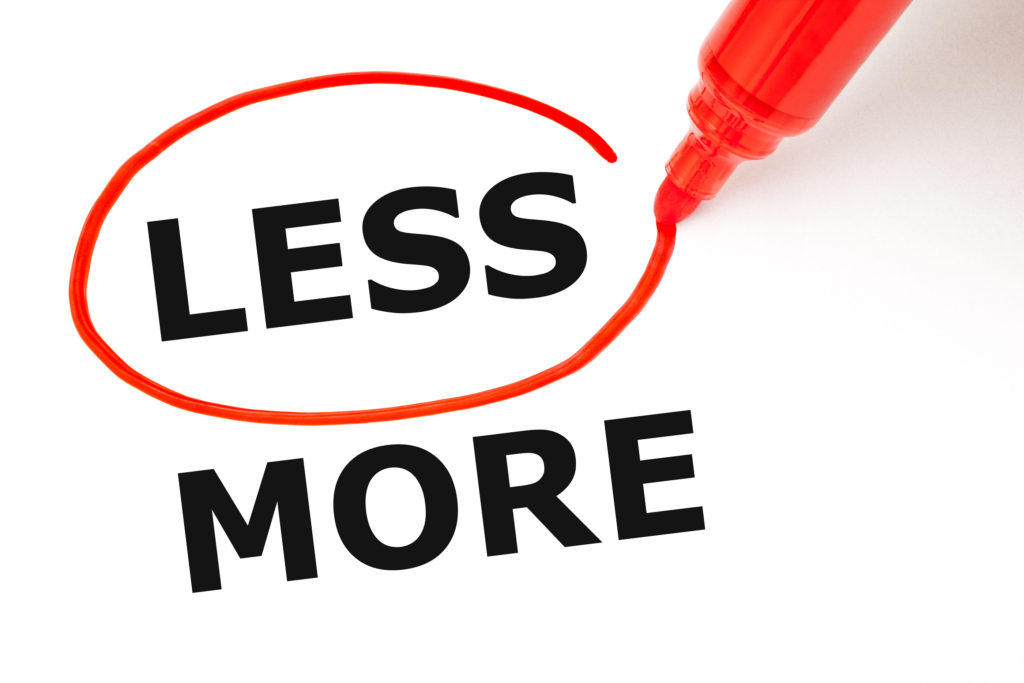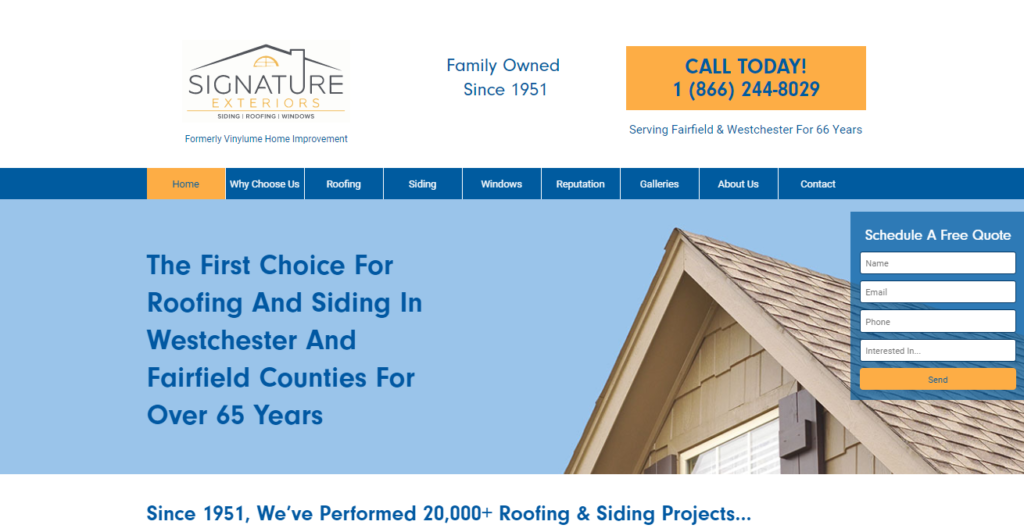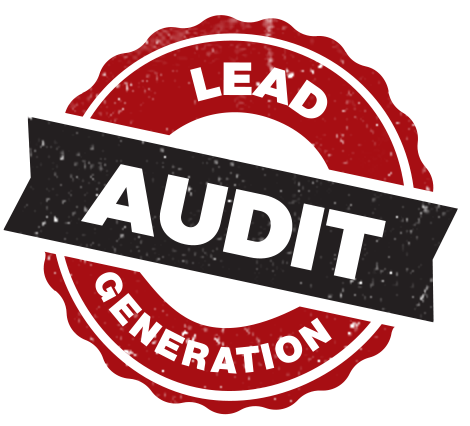Posted by Rich Harshaw on November 16, 2017.

Want unequivocal proof that No-Risk PPC Lead Generation creates a lead overload for contractors?
Here are the latest stats for five of our current PPC clients…
(Note: Company names kept confidential for privacy purposes. For more in-depth details on client lead amounts and CPL, email us!
- Illinois Door Company
- Number of leads since January 2017: 499
- Cost per lead: $147.97
- Utah Roofer
- Number of leads since January 2017: 592
- Cost per lead: $58.20
- Washington Gutter Company
- Number of leads since January 2017: 483
- Cost per lead: $124.41
- Tennessee Exterior Remodeler
- Number of leads since January 2017: 565
- Cost per lead: $161.70
- Kansas Kitchen and Bath Remodeler
- Number of leads since January 2017: 682
- Cost per lead: $26.65!
Remember: The amount of leads will go UP and the cost per lead will go DOWN the longer a PPC campaign runs. This is because a PPC campaign ages like fine wine—the longer it sets, the better it gets.
Also remember: We only consider leads to be people who contact you who are interested in the service YOU provide.
Hang-ups, warranty calls, calls from outside your service area, and calls from folks looking for what you don’t provide do NOT count as leads.
Here is an example of a lead taken from one of our window client’s online chats:
“We have 11 windows that need to be replaced. We remodeled the interior of our home last year, and we are now working on the exterior. Windows is part of it. We are replacing exterior next week.”
Now, here is an example from the same client’s online chat that we did NOT count as a lead, since it was outside the client’s service area:
“Does your company do siding & deck jobs in [city]? Looking to get the siding replaced and the deck on the house replaced. Do you only do vinyl siding? I’m looking to get a few bids, Thanks.”
Bottom line: We’re uncompromising about what we consider a lead. If it’s someone in your area interested in the services you provide, it’s a lead. Anything else is not.
Email us at noriskppc@mymonline.com to learn more about No-Risk PPC Lead Generation, our unprecedented $200 or less cost-per-lead guarantee, and our “pay as you go” model. Unlike other PPC companies, we don’t require you to pay a monthly PPC budget—you pay ONLY for the leads ONLY after we deliver them to you.
Posted by Rich Harshaw on November 6, 2017.

In terms of ranking well on search engines, sometimes less is more.
Google used to base a large part of their ranking signals on update frequency. But that’s not necessarily the case anymore.
Now more than ever, the Google Gods place more value on QUALITY of content over QUANTITY.
This means one stellar piece of content has more search engine “oomph” than, say, four or five average-quality blog posts.
Once you know the reasons, it’s easy to see why. People will stay on a page with awesome content longer. They’re also more likely to share that content.
These are two things Google holds dear when determining rankings. Google wants to give users THE most relevant and engaging content on the web. And average time on a page and “share-ability” are very good metrics for that.
To accommodate Google’s former thirst for frequency, we used to create 15 blog posts a month for our SEO clients. We’d post this content on their blogs two or three times per week.
The posts themselves were well-written, but not earth-shaking. And they weren’t meant to be. Like I said, we were going with what would make clients rank the highest. And that involved creating new blog fodder constantly.
Until very recently, this strategy worked. The posts would rank well, and everything was peachy-keen.
Over the past eight months or so, however, we noticed our onslaught of “pretty good” blog posts were not ranking as well as they once were. Not even close.
Here’s why…
Google launched another algorithm update, as they’re so fond of doing. Emphasis on FREQUENCY went down; the importance of QUALITY went up.
Google now penalizes you for posting too many articles a month with too little content. For example, if you’re posting 20 articles a month—and they’re all 300 words or less, have obsessive amounts of keywords, and you’re not a news site—you’ll get dinged with a Spam/Keyword Stuffing penalty.
We’re always on our toes to keep up with Google’s constant algorithm changes. As soon as we saw what we WERE doing was no longer working, we immediately called an audible.
MYM COO Bryan Bauman and the entire SEO team got together to work on a new blog-content strategy for our upgraded SEO clients. We determined we needed to “beef up” the posts we were delivering to clients. This meant creating better, cornerstone content that is powerful, informative, interesting, sharable, and laced with all the SEO elements Google eats up.
To achieve this, we had to do three things:
- Reduce the number of posts we provided from 15 to 4. Creating truly captivating content takes time; writing 15 A+ posts per month just isn’t possible.
- Bring aboard some more high-caliber content writers. We hired a new, highly experienced content writer a few months ago. (And we’re looking to add two more in 2018.)
- Set up one-on-one time with our content writers and upgraded SEO clients. We now have regular content-strategy calls with our upgraded SEO clients. We go over the clients’ goals for their blogs, see what products they want to push for that time frame, and how hard they want to hit particular keywords.
Here are a couple examples of the kind of meaty blog content we’re NOW producing:
- How To Manage An Unhappy Home Remodeling Client
- Does James Hardie Fiber Cement Cost More Than Vinyl Siding?
Read through these posts and think about what this type of content can do for your internet marketing.
It’s engaging. It’s shareable. It’s SEO-friendly. It ticks all the boxes for what a quality blog post is SUPPOSED to be.
Get more information about our SEO Services here. Then, get in touch with us if you want to take your blog—and search rankings—to new heights.
P.S. Don’t get me wrong… quantity IS still important for search rankings. Your website needs a steady stream of content to remain relevant in Google’s eyes. But that content must engage your audience. If it doesn’t, no one will read it… and your rankings will sink faster than a fishing boat made of Swiss cheese.
Posted by Rich Harshaw on November 2, 2017.

We’ve talked about an awesome new website we launched for Zen Windows Pennsylvania.
Here’s another website we launched for a client. This one is for Signature Exteriors, a roofing and siding contractor that has served Connecticut for 66 years.
Before I give you the link to their new website, let me tell you about some of its standout features:
- Content and eye-catching design elements have a great synergy on the homepage. From the big blue header to the main copy section to the service-area map, everything has a flow and progresses in a logical way that makes visitors to the site naturally scroll down the page.
- Also on the homepage is a Project Counter. This client has performed over 20,000 projects, so we determined that it would be a great idea to showcase that number on the website.
- The Jobsite Map page shows prospects exact addresses of past projects. This is a great credibility enhancer.
- A clean Project Gallery showcases the client’s great work, as well as Before & After shots.
- And as always, a powerful Identity permeates every page of the site (naturally).
Also…
This client is changing its name from Vinylume Home Improvement to Signature Exteriors. They’ve had the Vinylume name for decades, but it’s no longer reflects their company or services.
When rebranding, things can get messy online—prospects can get confused, business listings could get mixed up, and search results can suffer.
Here are some steps we’ve taken to ensure a smooth online transition…
- We added a redirect plan into their htaccess file. In layman’s terms, we alerted Google that all of the pages on their previous website (the one with their old company name) have now moved to the current website. This passes page ranking and authority over to the new website.
- We updated the client’s information on business listing website on which they are currently found (Houzz, Angie’s List, and BBB to name a few), and created accounts on listing sites they were not (Facebook, for instance).
- On the new website, we made it apparently clear that Signature Exteriors is the same trusted Vinylume that’s served the community for over 60 years… just with a cooler name.
Enough talk. Here’s the link: https://www.signatureexteriors.com/
Let us know if we can help with any of your internet marketing needs by calling (817) 416-4333.
Posted by Rich Harshaw on November 2, 2017.

You’ve probably never thought about it, but that “HTTP” in your web address plays an important role in your website’s security and visibility.
HTTP stands for “Hypertext Transfer Protocol.” It transfers data from a website to a web browser. HTTP is why it’s possible to view websites on your computer.
But HTTP is about to go the way of the dodo… and it may be cause for worry.
Here’s the deal…
When someone visits your website, it transfers a certain type of data from that person’s computer. If a website is HTTP, that data that passes through unencrypted, and can therefore be intercepted by nefarious third parties. These parties can then use the information to track a website visitor’s online “movements” and steal their precious private info.
To combat this issue, the internet is gradually switching to a more secure communication protocol known as HTTPS.
HTTPS stands for… drum roll, please… “Hypertext Transfer Protocol Secure.”
Without getting into too much geek-speak, HTTPS encrypts data transferred over the web to keep that data secure. It does this through a Secure Sockets Layer (SSL).
Websites that use HTTPS reap a number of benefits:
-
Higher search engine rankings
HTTPS websites have the SEO edge over HTTP websites. Search engines like to make sure that the websites they’re sending their users to are safe. If you’re vying with a competitor for the top spot on the results page, HTTPS can be the tiebreaker.
-
Better website security (duh!)
I already covered this above. HTTPS encrypts data that’s sent between a browser and a website. With HTTPS, no one can “spy” on your website visitors, track their activities, or steal their information.
-
More user trust
As HTTPS becomes more prevalent, the general public will take notice. When they see HTTPS in front of your website address, they’ll know that they’re information is safe while they’re browsing your website. It’s a subtle yet effective way to immediately build trust with your website visitors. Plus, this nifty lock icon shows up next to your website address in some web browsers:

In a nutshell, here’s how to switch from HTTP to HTTPS:
- Buy an SSL certificate and install it on your server.
- Update hard-coded links in your robots.txt files to HTTPS.
- Set up 301 redirects from HTTP to HTTPS. This informs search engines that you’ve changed your website’s addresses and also automatically redirects your old HTTP address to the new HTTPS address.
It’s actually a bit more complicated than this, but those are the basic steps.
Naturally, contractors who partner with MYM don’t have to fry their brains fussing over 301 redirects, SSL certificates, and robots.txt files.
Over the course of the last few months, we’ve moved all of our clients over to HTTPS. Would-be hackers all over the country wept.
If you’d like to keep your website safe and benefit from our internet-marketing services the way our clients do, get in touch with us in one of two ways:
- Pick up that thing you use to surf ESPN.com and check emails, and call us at (817) 416-4333.
- Visit https://mymonline.com/ and use the chat box in the lower-right corner to speak to an MYM representative immediately.
P.S. HTTPS is here to stay. It’ll eventually replace HTTP completely. That’s why it’s best to hop on board the HTTPS train right now, before search engines factor even more heavily into rankings. Do it now, and thank me later.











